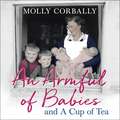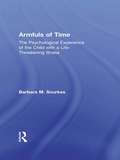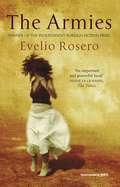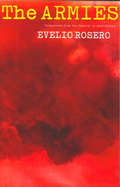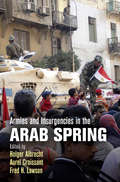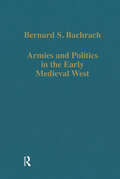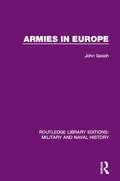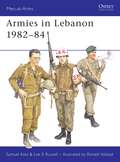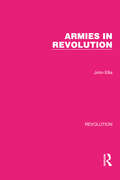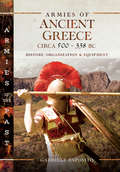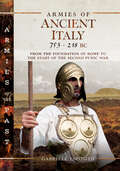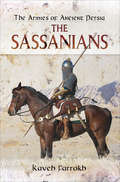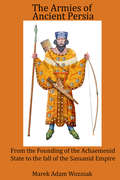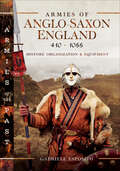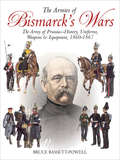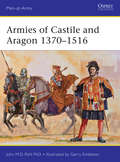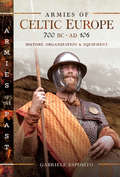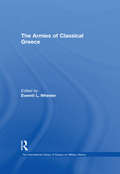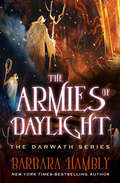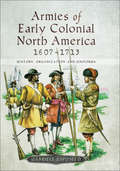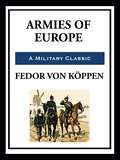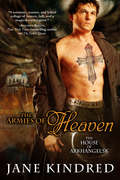- Table View
- List View
An Armful of Babies and a Cup of Tea: Memoirs of a 1950s NHS Health Visitor
by Molly CorballyFor all fans of Call the Midwife - a touching memoir of a young health visitor in postwar England (from the 1940s to the 1970s). After serving as a nurse in WW2, Molly Corbally joined the brand new NHS and became one of the first official District Health Visitors, attending to mothers and babies from all walks of life in the picturesque village near Coventry she came to call home. Social work was uncharted territory at the time, and Britain was very much worse for wear - TB, polio, measles and whooping cough were just some of the hazards new babies faced. Social conditions could also add to the problems, when poverty and alcoholism were rife. Armed with only her nursing training, her common sense and a desire to serve, Molly set out to win over a community and provide a new and valuable service in times of great change. As well as the challenges there was also joy and laughter, from the woman who finally had a baby after fifteen years of trying, to the woman who thought she should use marmalade as nappy cream, because the hospital had never taken the label off the jar they were using to store it.Warm, witty and moving, An Armful of Babies is a vivid portrait of rural England in the post-war years, and a testament to an NHS in its own infancy and to what hasn't changed: the bond between parents and their children, and the importance of protecting that.(P)2018 Hodder & Stoughton Limited
Armfuls of Time: The Psychological Experience of the Child with a Life-Threatening Illness
by Barbara M. Sourkes'I just wish I had armfuls of time.' These are the poignant words of a four year old facing a life-threatening illness. Armfuls of Time eloquently portrays the psychological experience of such children, who are irreversibly changed from the moment of diagnosis. Barbara M. Sourkes, Ph.D. describes how she works with these children, using drawings, soft toys and dolls, stories and real medical objects, to allow them to communicate their feelings about the treatment they undergo, their relationship with their families, their experience of the illness and living with the threat of loss. Making extensive use of the words of children, offering astute interpretations and sound practical advice, this is a book that will be welcomed by all those concerned with the care of children with life-threatening illnesses.
The Armies: Winner of the Independent Foreign Fiction Prize
by Evelio RoseroIn a small town in the mountains of Colombia, Ismael, a retired teacher, spends his mornings gathering oranges in the sunshine and spying on his neighbour as she sunbathes naked in her garden.Returning from a walk one morning he discovers that his wife has disappeared. Then more people go missing, and not-so-distant gunfire signals the approach of war. Most of the villagers make their escape, but Ismael cannot leave without his Otilia. He becomes an unwilling witness to the senseless civil war that sweeps through his country with a tragic inevitability. In The Armies Rosero has created a hallucinatory, relentless, captivating narrative often as violent as the events it describes, told by an old man battered by a reality he no longer recognizes.
The Armies
by Evelio Rosero Anne McleanAn elderly retired teacher is caught up in drug wars which slowly destroy his small town. Ismail, the profesor, is a retired teacher in a small Colombian town where he passes the days pretending to pick oranges while spying on his neighbor Geraldina as she lies naked in the shade of a ceiba tree on a red floral quilt. The garden burns with sunlight; the macaws laugh sweetly. Otilia, Ismail's wife, is ashamed of his peeping and suggests that he pay a visit to Father Albornoz. Instead, Ismail wanders the town visiting old friends, plagued by a tangle of secret memories: Where have I existed these years? I answer myself: up on the wall, peering over. When the armies slowly arrive, the profesor's reveries are gradually taken over by a living hell. His wife disappears and he must find her. We learn that not only gentle, grassy hillsides surround San José but landmines and coca fields. The reader is soon engulfed by the violence of Rosero's narrative that is touched not only with a deep sadness, but an extraordinary tenderness.
Armies and Insurgencies in the Arab Spring
by Holger Albrecht Fred H. Lawson Aurel CroissantFollowing the popular uprisings that swept across the Arab world beginning in 2010, armed forces remained pivotal actors in politics throughout the region. As demonstrators started to challenge entrenched autocratic rulers in Tunis, Cairo, Sana'a, and Manama, the militaries stormed back into the limelight and largely determined whether any given ruler survived the protests. In Tunisia, Egypt, and Yemen, senior officers pulled away from their presidents, while in Algeria, Bahrain, and Syria, they did not. More important, military officers took command in shaping the new order and conflict trajectories throughout that region.Armies and Insurgencies in the Arab Spring explores the central problems surrounding the role of armed forces in the contemporary Arab world. How and why do military apparatuses actively intervene in politics? What explains the fact that in some countries, military officers and rank-and-file take steps to defend an incumbent, while in others they defect and refrain from suppressing popular protest? What are the institutional legacies of the military's engagement during, and in the immediate aftermath of, mass uprisings?Focusing on these questions, editors Holger Albrecht, Aurel Croissant, and Fred H. Lawson have organized Armies and Insurgencies in the Arab Spring into three sections. The first employs case studies to make comparisons within and between regions; the second examines military engagements in the Arab uprisings in Yemen, Bahrain, and Syria; and the third looks at political developments following the cresting of the protest wave in Egypt, Tunisia, Libya, and the Gulf. The collection promotes better understanding not only of the particular history of military engagement in the Arab Spring but also of significant aspects of the transformation of political-military relations in other regions of the contemporary world.Contributors: Holger Albrecht, Risa A. Brooks, Cherine Chams El-Dine, Virginie Collombier, Aurel Croissant, Philippe Droz-Vincent, Kevin Koehler, Fred H. Lawson, Shana Marshall, Dorothy Ohl, David Pion-Berlin, Tobias Selge, Robert Springborg.
Armies and Politics in the Early Medieval West (Variorum Collected Studies)
by Bernard S. BachrachIn these articles Professor Bachrach starts by looking at aspects of the ’barbarian’ occupation of the land of the Roman Empire, from Britain to the Alan settlements in southern Gaul. His particular interest, however, is in the political and, above all, in the military structures that grew out of the Early Middle Ages. He has sought to demonstrate that there was a fundamental continuity in military organisation and tactics from the Merovingian through the Carolingian period. As he shows, there is no reason to connect the origins of ’feudalism’ with Charles Martel’s wish to create a force of cavalry, and it is a fallacy that he grasped the potential of the stirrup for enabling mounted shock combat. On the contrary, its use in the West progressed only slowly, and it had nothing to do with the origins or growth of feudalism. Le professeur Bachrach débute par l’analyse de certains aspects de l’occupation barbare des terres de l’empire romain, de la Grande-Bretagne aux campements alans en Gaule méridionale. Il s’attache en suite aux structures politiques et, surtout, militaires qui furent issues du Haut Moyen Age. Selon lui, et il tente d’en faire ici la démonstration, l’organisation et les tactiques militaires ont fait preuve d’une continuité fondamentale de l’époque mérovingienne à celle des Carolingiens. Comme il le demontre, il n’y a pas lieu d’établir de liens entre l’origine du féodalisme et le désir qu’avait Charles Martel de créer une cavalerie; il est également tout à fait erroné de dire que ce dernier s’était rendu compte du potentiel de l’étrier en tant que facteur de mener des combats à cheval de choc. Bien contraire, l’utilisation de l’étrier à l’Ouest ne fit que progresser lentement et aucun rapport n’existe entre cet instrument et l’origine ou la croissance de la féodalité.
Armies in Europe (Routledge Library Editions: Military and Naval History #14)
by John GoochThis book, originally published in 1980, is a study of the nature and purposes of peace-time military organization in Europe, and of the characteristics and outcome of the major wars fought during these years. It charts the rise of mass armies and the role of conscription as a socializing agent and a military instrument, as well as discussing the growing involvement of society in war both as agent and target of military activity, the mounting effort required of a society in order to ahcieve victory, culminating in the ‘Total War’ of 1939-45. Among other subjects explored are the development of war economies, the genesis and significance of war aims, the importance of social cohesion in modern war and the impact of technology.
Armies in Lebanon 1982-84
by Ronald Volstad Sam KatzThe Lebanese Civil War of 1975-76 caused 80,000 dead and totally split the country along factional lines. An estimated 50 different militias came into existence, and acts of violence were both individual and collective. In the midst of this explosive atmosphere, cross-border conflict between Israel and Lebanon intensified, culminating in Operation Peace for Galilee - the invasion of Lebanon. This book offers a day-by-day account of the invasion and the subsequent siege of Beirut, an operation that resulted in both the PLO and Israel claiming victory. Numerous photographs and colour plates portray the uniforms and equipment of the Israeli, Palestinian and Multi-National forces.
Armies in Revolution (Routledge Library Editions: Revolution #1)
by John EllisThis book, first published in 1973, examines seven revolutionary armies ranging from Cromwell’s New Model Army to the Red Army of Mao Zedong. In each case it examines the mobilisation and organisation of the army, and the need to balance political ideals and aspirations with military cohesion and discipline, and social stability. This book is an outstanding example of a study of the relationship between the military and society, and shows that no revolution can succeed without an organised army and that few such armies can tolerate for long the ideology that created them.
Armies of Ancient Greece Circa 500–338 BC: History, Organization & Equipment (Armies Of The Past Ser.)
by Gabriele EspositoIllustrated with color photos, this guide details the arms, armor, organization, and tactics of Classical Greek armies.The Classical period includes some of the most famous wars and battles of Ancient Greece, including the defeat of the Persians at Marathon, the Spartans’ last stand at Thermopylae, the Peloponnesian War and the March of the Ten Thousand. The Greek heavy infantry spearmen, or hoplites, are one of the most recognizable types of ancient warrior and their tightly-packed phalanx formation dominated the battlefield.Covering the period from the Persian Wars to the Macedonian victory at the Battle of Chaeronea, Gabriele Esposito examines the famous hoplites heavy infantry as well as other troops, such as light infantry skirmishers and cavalry. His clear, informative text is beautifully illustrated with dozens of color photographs showing how the equipment was worn and used.
Armies of Ancient Italy, 753–218 BC: From the Foundation of Rome to the Start of the Second Punic War (Armies of the Past)
by Gabriele EspositoA military history of ancient Italy, featuring details of the weapons, equipment, and tactics, as well as color photos showing how warriors looked.Before becoming the masters of the Mediterranean world, the Romans had first to conquer the Italian peninsula in a series of harsh conflicts against its other varied and warlike residents. The outcome was no foregone conclusion and it took the Romans half a millennium to secure the whole of Italy.In Armies of Ancient Italy 753–218 BC, Gabriele Esposito presents the armies that fought these wars, in which the Roman military spirit and their famous legions were forged. He not only follows the evolution of the Roman forces from the Regal Period to the outbreak of the Second Punic War but also the forces of their neighbors, rivals and enemies. The most notable of these, the Etruscans, Samnites and the Italian Greeks are given particular attention but others, such as the Celts and Ligures of the North and the warriors of Sicily and Sardinia, are also considered. Details of the organization, weapons, equipment and tactics of each army are described, while dozens of beautiful color photos of reenactors show how these warriors looked in the field.“Once more, a beautifully illustrated book, this time starting with the story of Rome from the Regal Period to the Second Punic War. The author follows the highly successful format of his books covering the late period of the Roman Empire.—Most Highly Recommended.” —Firetrench“An interesting look at all the people of the Italian era, but what really brings it to life are the countless full colour photographs of re-enactor groups in the correct armour and dress for the various tribes and regions they represent. Excellent production standards and a fascinating look at the history of early Rome.” —The Armourer
The Armies of Ancient Persia: The Sassanians
by Kaveh FarrokhThroughout most of the classical period, Persia was one of the great superpowers, placing a limit on the expansion of Western powers. It was the most formidable rival to the Roman empire for centuries, until Persia, by then under the Sassanians, was overwhelmed by the Islamic conquests in the seventh century AD. Yet, the armies of ancient Persia have received relatively little detailed attention, certainly in comparison to those of Rome. This work is the firsst of three volumes that will form the most comprehensive study of ancient Persian armies available.The Sassanians, the native Iranian dynasty that ousted their Parthian overlords in AD 226, developed a highly sophisticated army that was able for centuries to hold off all comers. They continued the Parthians famous winning combination of swift horse archers with heavily-armored cataphract cavalry, also making much use of war elephants, but Kaveh Farrokh interestingly demonstrates that their oft-maligned infantry has been much underestimated.The author, born in Athens, Greece, and expert in ancient Persian languages and military history, has been researching the military history and technology of Persia for a quarter of a century. He draws on the latest research and new archaeological evidence, focusing on the organization, equipment and tactics of the armies that dominated the ancient Middle East for so long.
Armies of Ancient Persia: From the Founding of the Achaemendid State to the Fall of the Sassanid Empire
by Marek Adam WozniakThe Armies of Ancient Persia is a translation of Marek Adam Wozniak’s original Polish manuscript detailing the rise and fall of the Persian armies from Cyrus the Great to the fall of the Sasanid Empire. Relying on a wealth of recent archeological evidence and studies, Dr. Wozniak provide a detail picture of the recruitment, organization, armament and battles of one of the largest armies of the ancient world
Armies of Anglo-Saxon England 410–1066: History, Organization and Equipment (Armies of the Past)
by Gabriele EspositoIn the early 5th century, Germanic Angles, Saxons and Jutes crossed the North Sea in increasing numbers and began settling among the ruins of the former Roman province of Britannia. This led to centuries of warfare as these 'Anglo-Saxons' carved new, independent kingdoms at the point of the sword, fighting the native Britons and each other. From the late eighth century they also had to face the threat of the Vikings, at first as opportunistic raiders but increasingly bent on conquest. The last Viking invasion was defeated by Harold Godwinson at Stamford Bridge but he was defeated by the Normans in that same fatal year of 1066, ending the Anglo-Saxon Age. Gabriele Esposito gives an overview of Anglo-Saxon military history, narrating the great campaigns, such as those of Alfred the Great of Wessex and Harold Godwinson. He discusses in detail the composition of Anglo-Saxon forces, their tactics, weapons and equipment, detailing developments across the period. The informative, accessible text is supported by dozens of color images showing replica Saxon war gear in use.
The Armies of Bismarck's Wars: The Army of Prussia—History, Uniforms, Weapons & Equipment, 1860–67
by Bruce Basset-PowellThe riveting story of the nineteenth-century rise of the Prussian army—a key factor in the unification of Germany—with maps and illustrations. On July 3, 1866, a Prussian force overwhelmed and defeated an Austrian army near the fortress city of Königgrätz in a bloody battle that lasted all day. At a stroke, the foremost power in Germany and central Europe had been reduced to a second rate player. The event caused anxiety and alarm in the capitals of the western world. How was an upstart country like Prussia able to upset the balance of power in Europe? Only sixteen years before, it had been put in its place by Austria with the treaty of Olmütz. Its performance as an Austrian ally had been less than stellar in the Second Schleswig War of 1864, despite its defeat of the Danes at Düppel. Yet within five years, a Prussian-led army would humble France and a Prussian king would be crowned emperor of a united Germany. The history of the world would be changed forever. This book tells the story of this army, chronicling its growth from the end of the Napoleonic Wars to the reforms of the 1860s, then offering a full account of the wars against Denmark in 1864 and Austria in 1866. The author shows how the confluence of three men&’s lives—King William I, Helmuth von Moltke, and Otto von Bismarck—provided the essential ingredients that created this victorious army. The growth and influence of the General Staff is examined, along with the recruitment and training of officers and men. Powell fully describes the organization of the army and the fledgling navy, as well as the weapons with which they fought.
Armies of Castile and Aragon 1370-1516
by John Pohl Gerry EmbletonArmies of Castile and Aragon depicts the fighting men whose skill and tactical flexibility made Spain into a world power at the close of the Middle Ages, carving out empires from the Mediterranean to the Caribbean. Much has been written of the men who fought in the Hundred Years' War between England and France, and the Wars of the Roses. But meanwhile, on the Iberian peninsula, the foundations of Spain's military 'Golden Age' were being laid as the kingdoms of Castile and Aragon under the Trastamara dynasty grew in power, ambition and success. This book features spectacular full-color artwork, and rare manuscript illustrations.
Armies of Celtic Europe, 700 BC–AD 106: History, Organization & Equipment (Armies of the Past)
by Gabriele EspositoA look at the military might of these ancient warriors who sacked Rome and conquered much of Europe. Although comprised of many distinct tribes and groupings, the Celts shared a distinctive culture that dominated much of Europe for centuries, and enjoyed a formidable reputation as fierce and brave warriors, skilled horsemen, and fine metalworkers. In 390 BC, an alliance of Celtic tribes defeated a Roman army at the River Allia and went on to sack Rome and thenceforth the Romans lived under their threat. In the early third century BC, a Celtic army swept into Macedonia and Greece, won a major victory at Thermopylai, and ransacked the sacred sanctuary at Delphi. Such was their warlike prowess that, when not fighting their own wars, they were sought after as mercenaries by many armies, serving as far afield as southern Egypt. When the Romans invaded Gaul—modern-day France and Belgium—and the British Isles, Celtic armies resisted them fiercely. In this book, Gabriele Esposito studies this fascinating warrior culture, their armies, strategy, tactics, and equipment—they invented the horned saddle and chainmail, and British armies were the last in Europe to use chariots on the battlefield. Also included are dozens of color photographs of reenactors to help bring these magnificent warriors back to life.
Armies of Celtic Europe, 700 BC–AD 106: History, Organization & Equipment (Armies of the Past)
by Gabriele EspositoA look at the military might of these ancient warriors who sacked Rome and conquered much of Europe. Although comprised of many distinct tribes and groupings, the Celts shared a distinctive culture that dominated much of Europe for centuries, and enjoyed a formidable reputation as fierce and brave warriors, skilled horsemen, and fine metalworkers. In 390 BC, an alliance of Celtic tribes defeated a Roman army at the River Allia and went on to sack Rome and thenceforth the Romans lived under their threat. In the early third century BC, a Celtic army swept into Macedonia and Greece, won a major victory at Thermopylai, and ransacked the sacred sanctuary at Delphi. Such was their warlike prowess that, when not fighting their own wars, they were sought after as mercenaries by many armies, serving as far afield as southern Egypt. When the Romans invaded Gaul—modern-day France and Belgium—and the British Isles, Celtic armies resisted them fiercely. In this book, Gabriele Esposito studies this fascinating warrior culture, their armies, strategy, tactics, and equipment—they invented the horned saddle and chainmail, and British armies were the last in Europe to use chariots on the battlefield. Also included are dozens of color photographs of reenactors to help bring these magnificent warriors back to life.
The Armies of Classical Greece (The International Library of Essays on Military History)
by Everett L. WheelerThe origin of the Western military tradition in Greece 750-362 BC is fraught with controversies, such as the date and nature of the phalanx, the role of agricultural destruction and the existence of rules and ritualistic practices. This volume collects papers significant for specific points in debates or theoretical value in shaping and critiquing controversial viewpoints. An introduction offers a critical analysis of recent trends in ancient military history and provides a bibliographical essay contextualizing the papers within the framework of debates with a guide to further reading.
The Armies of Daylight (The Darwath Series #3)
by Barbara HamblyThe bestselling author&’s epic fantasy trilogy comes to a dramatic end. The &“cold, tense, creeping dread lasts right up until the final confrontation&” (Tor.com). Since the Dark Ones returned, the world has been laid to waste. The land&’s wizards have been slaughtered, its cities destroyed, and its people scattered in terror, and few have witnessed more of the destruction than Rudy and Gil—two ordinary Californians who found their way across the Void, and took up arms in defense of a strange and magical world. She learned the ways of war, while he found within himself the powers of a great wizard. Both of them will need all their strength to survive this final challenge. Ingold, the master wizard, has devised a spell to hide the user from the deathly stare of the Dark, and he intends to use it to strike at their very heart. Finally, Rudy, Gil, and the rest of mankind&’s survivors will take the offensive, bringing an end to this terrible war, for better or for worse. This ebook features an illustrated biography of Barbara Hambly, including rare photos and never-before-seen documents from the author&’s personal collection.
The Armies of Daylight: The Time Of The Dark, The Walls Of Air, And The Armies Of Daylight (The Darwath Series #3)
by Barbara HamblyThe bestselling author&’s epic fantasy trilogy comes to a dramatic end. The &“cold, tense, creeping dread lasts right up until the final confrontation&” (Tor.com). Since the Dark Ones returned, the world has been laid to waste. The land&’s wizards have been slaughtered, its cities destroyed, and its people scattered in terror, and few have witnessed more of the destruction than Rudy and Gil—two ordinary Californians who found their way across the Void, and took up arms in defense of a strange and magical world. She learned the ways of war, while he found within himself the powers of a great wizard. Both of them will need all their strength to survive this final challenge. Ingold, the master wizard, has devised a spell to hide the user from the deathly stare of the Dark, and he intends to use it to strike at their very heart. Finally, Rudy, Gil, and the rest of mankind&’s survivors will take the offensive, bringing an end to this terrible war, for better or for worse. This ebook features an illustrated biography of Barbara Hambly, including rare photos and never-before-seen documents from the author&’s personal collection.
Armies of Early Colonial North America, 1607–1713: History, Organization and Uniforms
by Gabriele EspositoGabriele Esposito presents a detailed overview of the military history of Colonial North America during its earliest period, from the first colonial settlement in Jamestown to the end of the first continental war fought in the Americas. He follows the development of organization and uniforms not only for the British Colonies of North America but also for the French ones of Canada. Every colonial unit formed by the Europeans in the New World, as well as the regular troops sent to America by Britain and France, is covered in detail: from the early militias of the Thirteen Colonies to the expeditionary forces formed during the War of the Spanish Succession. Great military events, like King Philips War or Bacons Rebellion, are analyzed and the evolution of tactics employed in this theater are discussed, showing how much warfare was influenced by the terrain and conditions in North America. Dozens of illustrations, including color art works, show the first military uniforms ever worn in North America, as well as interesting details of weaponry and equipment used.
Armies of Empire
by Allan ConverseThe study of military history forms a critical part of the Army's learning cycle. By publishing the work of the nation's pre-eminent military historians, the Australian Army and Cambridge University Press aim to promote, to a worldwide audience, our country's proud military heritage. Detailing the history of the Army, its people and its contribution to Australia's development, the series presents readers with contemporary perspectives and authoritative accounts of the key issues in the Army's past. The Australian Army is pleased to collaborate with Cambridge University Press to deliver the official Australian Army History Series. Book jacket.
The Armies of Europe
by Edor von KöppenA fascinating glimpse into the history of warfare. A must for military history buffs, writers wishing to for historical accuracy in their portrayal of historical armies, or anyone interested in the eighteen hundreds.
The Armies of Heaven
by Jane KindredFull-scale war has broken out in Heaven, and Anazakia must embrace her destiny, leading an army of Virtues into battle against a Host of enemies to restore the House of Arkhangel'sk. Furious with her for putting her trust in the angel who has done them all irreparable harm, Vasily tries to ignore his growing resentment, while Belphagor returns to the world of Man with a cadre of beautiful androgynous Virtues to restore the sundered alliance between the Fallen and the gypsy underground. Without their help in enlisting the terrestrial forces of Grigori and Nephilim, Anazakia's Virtues are hopelessly outnumbered. But there are more things in Heaven and Earth than any of them have dreamt of, and those they cannot see will mean the difference between victory and losing everything.
